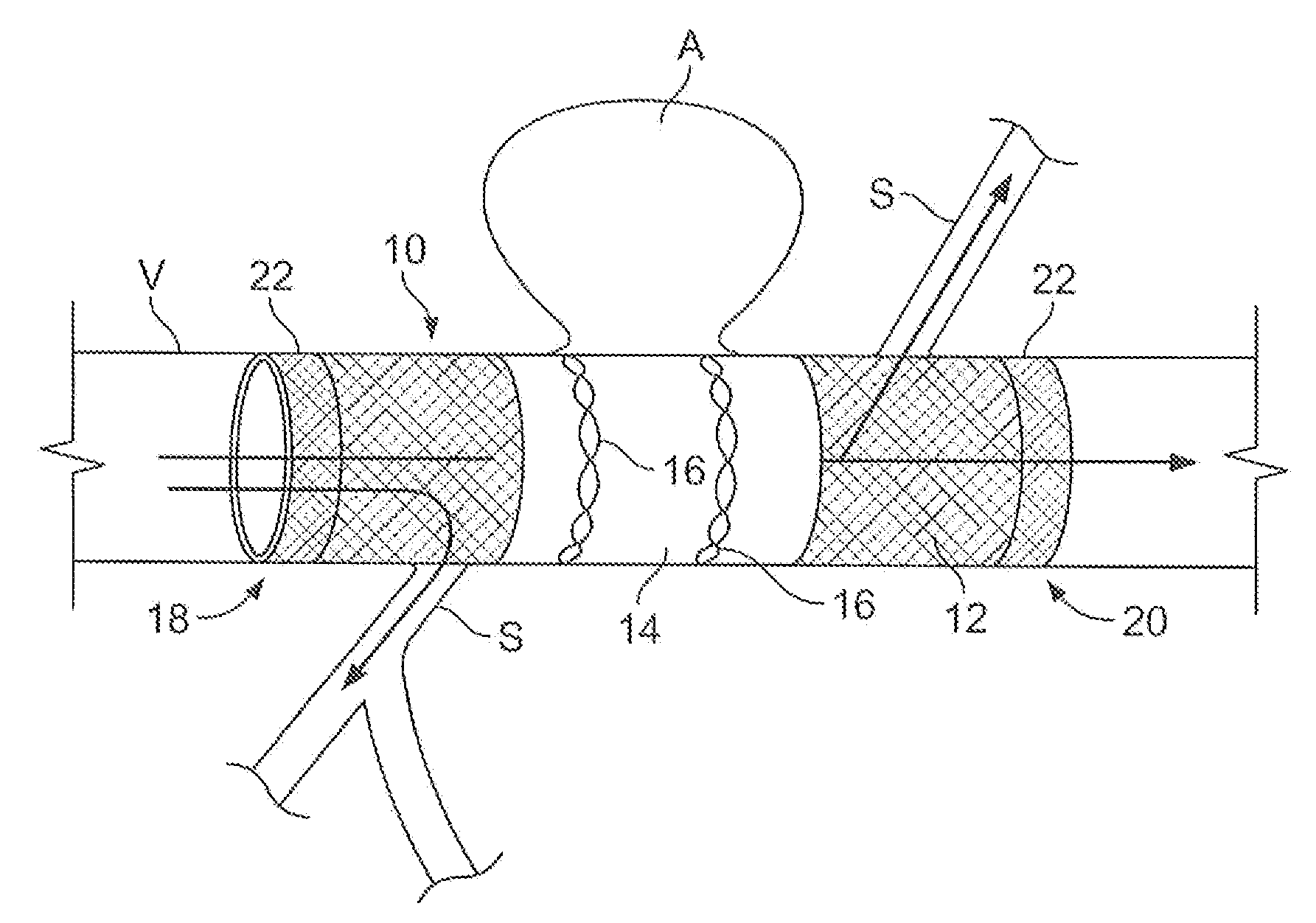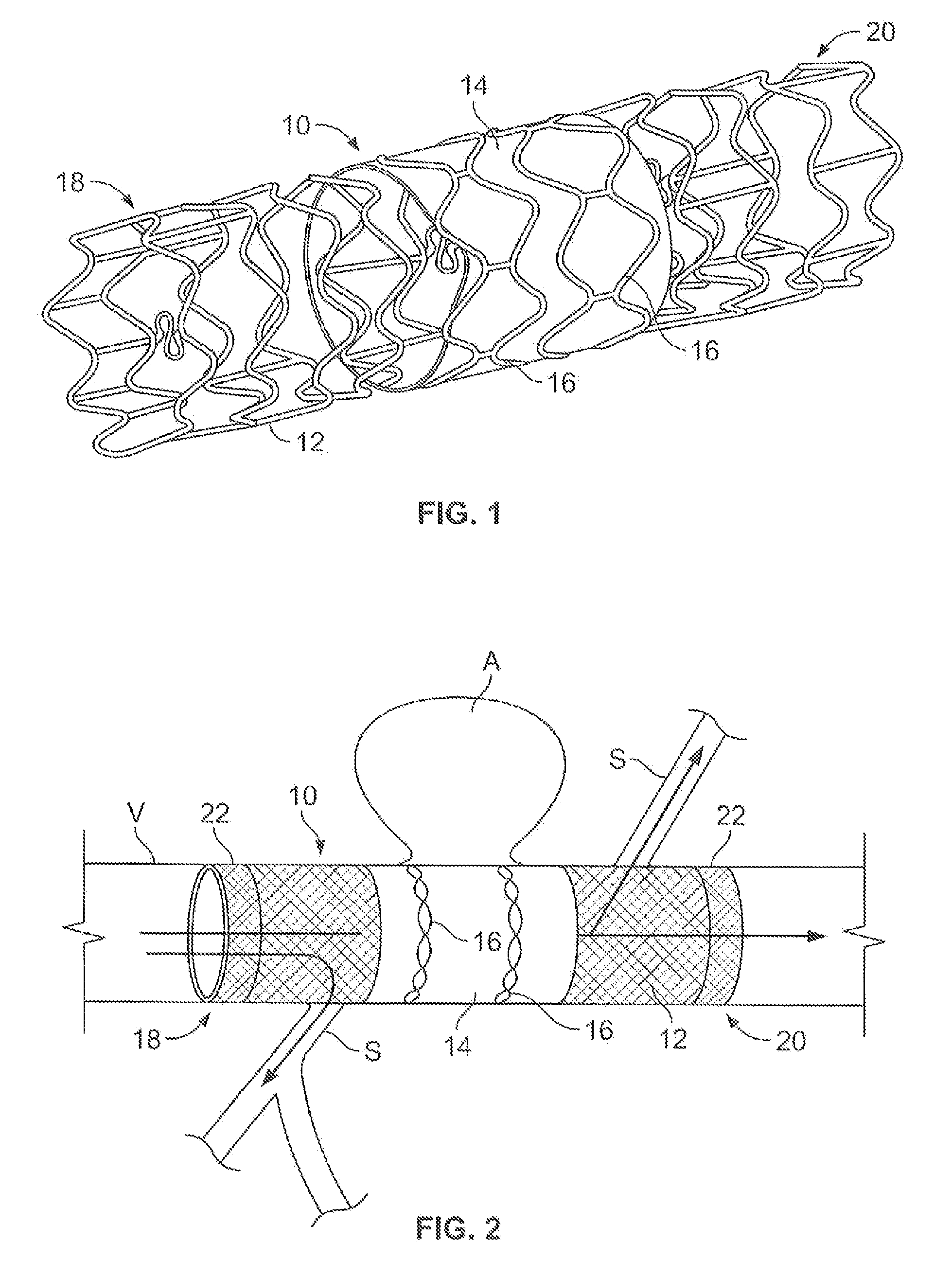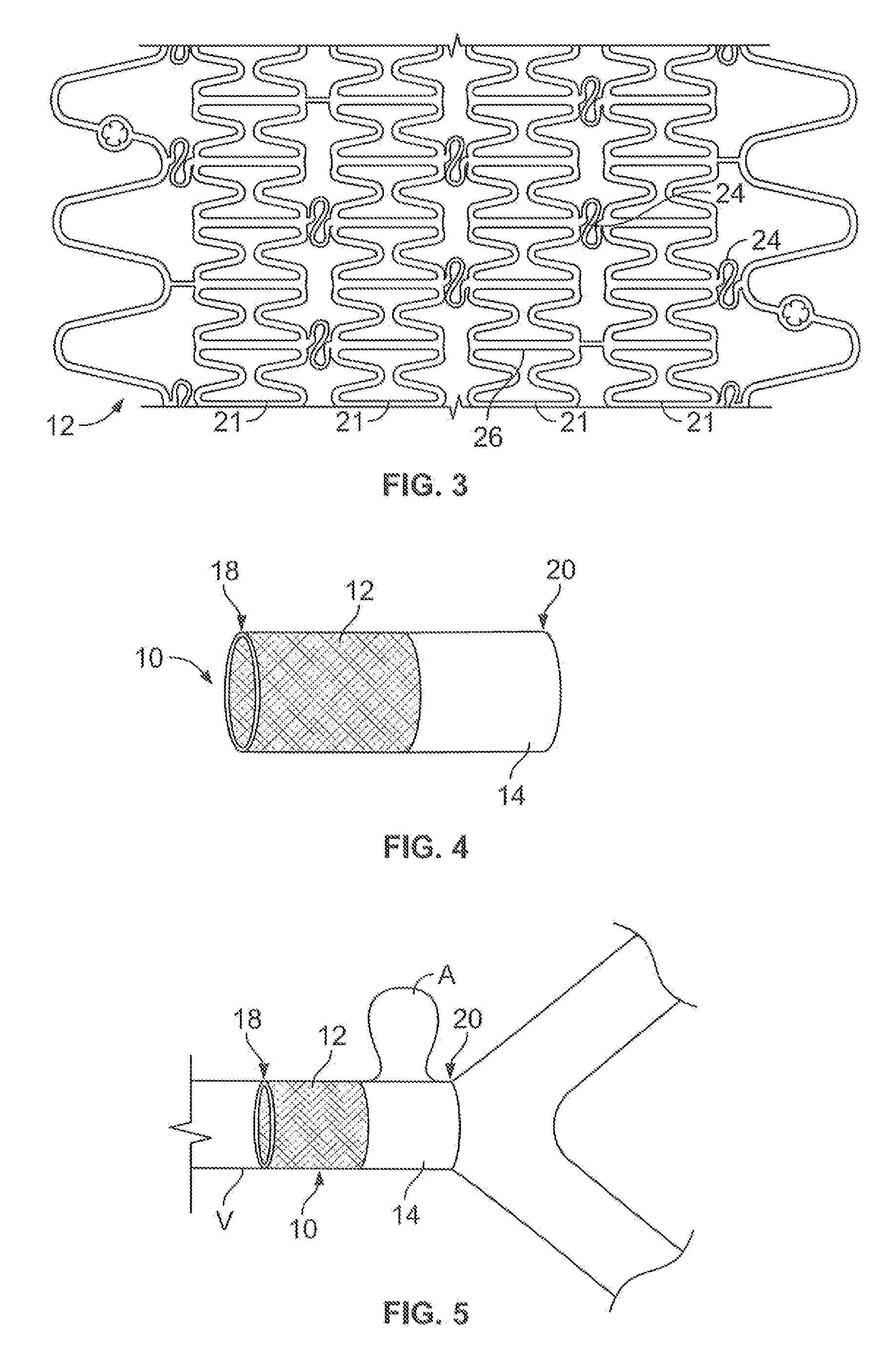Partially covered stent devices and methods of use
a stent and stent technology, applied in the field of partial stents, can solve the problems of unable to repair cerebral aneurysms, too large aneurismal openings or necks, and unable to achieve surgical repair of cerebral aneurysms, so as to prevent flow
- Summary
- Abstract
- Description
- Claims
- Application Information
AI Technical Summary
Benefits of technology
Problems solved by technology
Method used
Image
Examples
Embodiment Construction
[0027]FIG. 1 illustrates an embodiment of a stent 10 of the present invention. In this embodiment, the stent 10 comprises a frame 12, a graft or covering 14, and a pair of security rings 16. The frame 12 has a tubular shape and extends from a first end 18 to a second end 20. The covering 14 is sized to cover a portion of the frame 12, typically approximately ⅓ of the length of the frame 12. In this embodiment, the covering 14 is positioned over the exterior of the frame 12 and secured in place by the security rings 16 which are positioned thereon. Additional description and embodiments are provided in later sections.
[0028]FIG. 2 illustrates the stent 10 of FIG. 1 positioned within a blood vessel V having an aneurysm A. As shown, the stent 10 is positioned so that the covering 14 covers the opening of neck of the aneurysm A, restricting blood flow into the aneurysm A. Thus, the aneurysm A is excluded from the circulation without the need for filing the aneurysm A, such as with coils...
PUM
 Login to View More
Login to View More Abstract
Description
Claims
Application Information
 Login to View More
Login to View More - R&D
- Intellectual Property
- Life Sciences
- Materials
- Tech Scout
- Unparalleled Data Quality
- Higher Quality Content
- 60% Fewer Hallucinations
Browse by: Latest US Patents, China's latest patents, Technical Efficacy Thesaurus, Application Domain, Technology Topic, Popular Technical Reports.
© 2025 PatSnap. All rights reserved.Legal|Privacy policy|Modern Slavery Act Transparency Statement|Sitemap|About US| Contact US: help@patsnap.com



